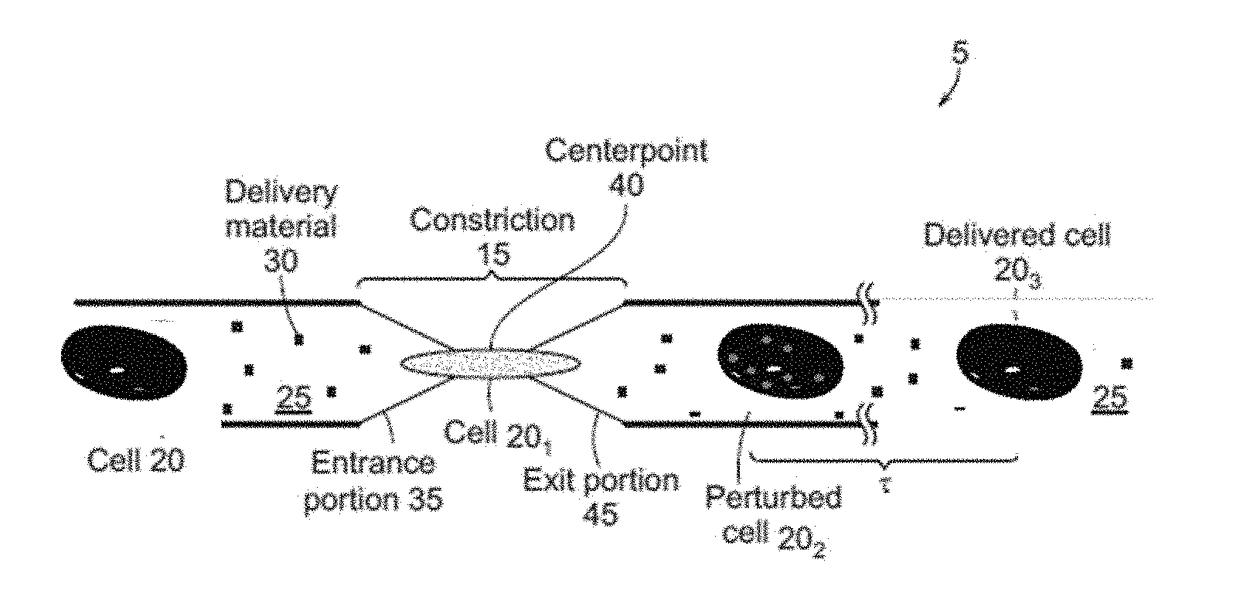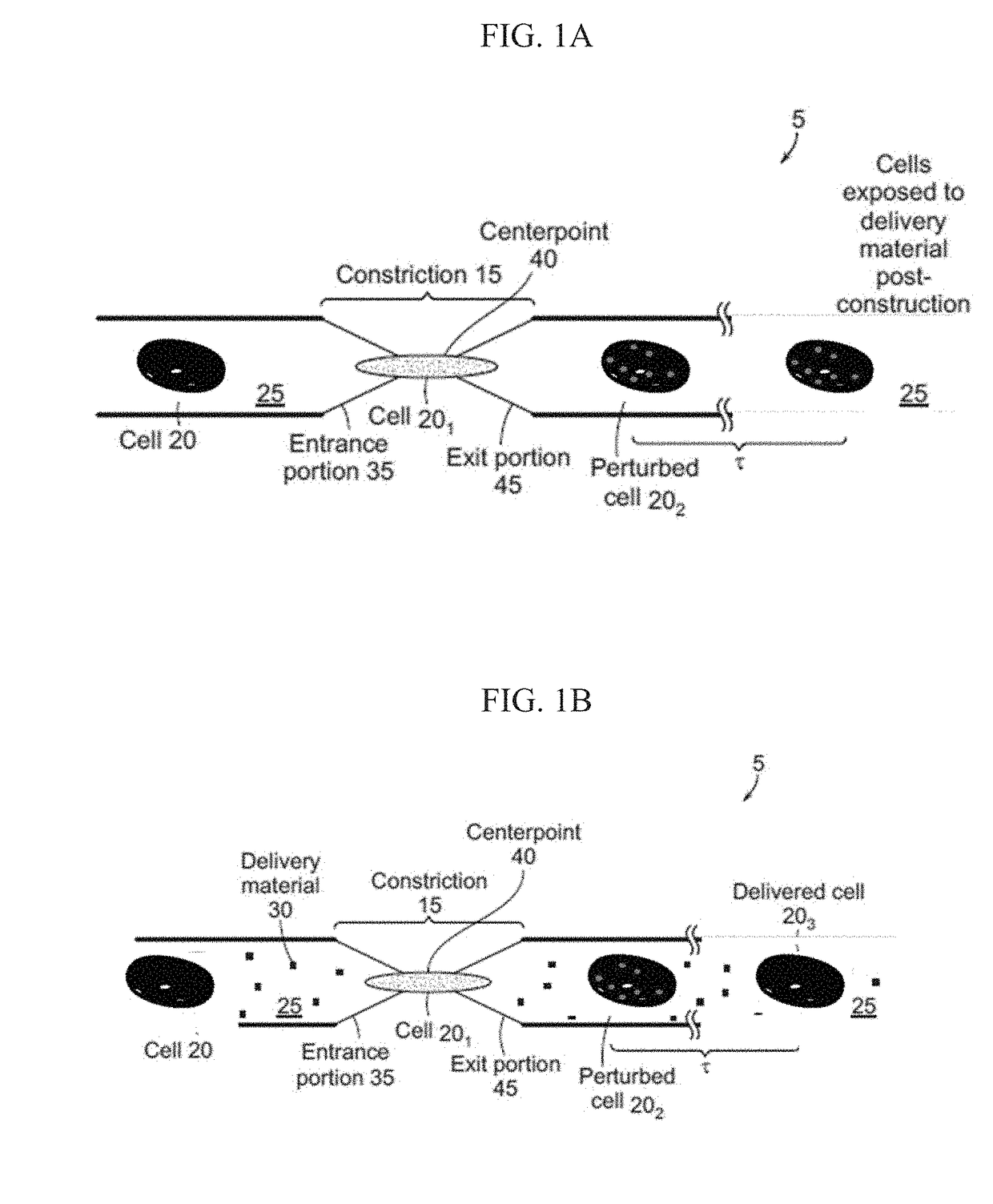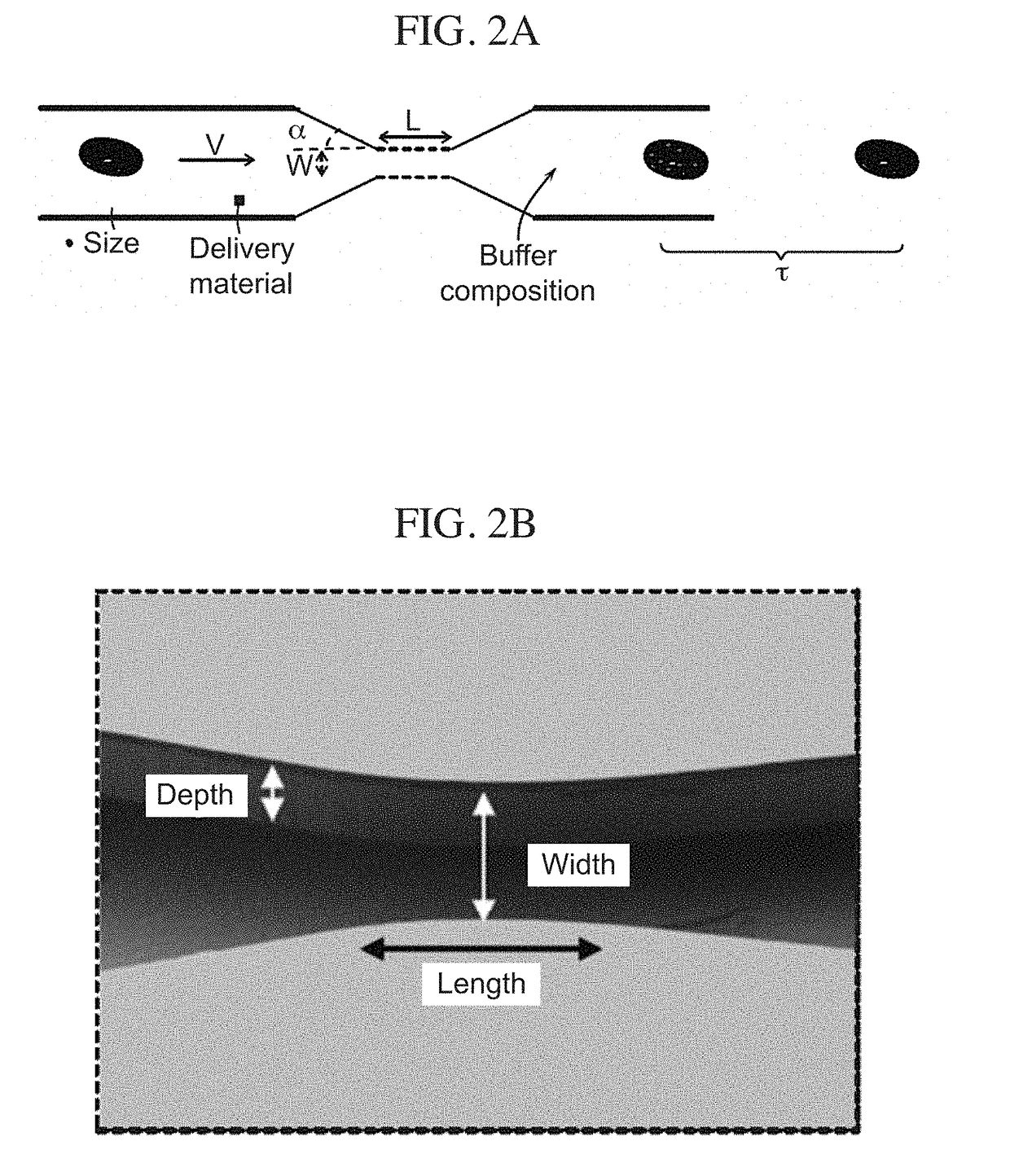Delivery of materials to anucleate cells
a technology of anuclear cells and materials, applied in drug compositions, antiparasitic agents, extracellular fluid disorder, etc., can solve the problems of severe destabilization of red blood cells, ineffective conventional techniques such as electroporation and lipofection in isolation, and difficulty in delivering materials into their cytoplasm
- Summary
- Abstract
- Description
- Claims
- Application Information
AI Technical Summary
Benefits of technology
Problems solved by technology
Method used
Image
Examples
example 1
Optimization of Microfluidic Systems for Delivery of Materials to Anucleate Cells
[0070]Microfluidic systems capable of delivering a variety of compounds to anucleate cells were constructed. As described below, these microfluidic systems were constructed to allow for the passage of an anucleate cell suspended in a buffer through a constriction configured to cause perturbations in the cell large enough for a payload (e.g., compound or macromolecule) to pass through the cellular membrane and into the cytosol, resulting in a delivered cell. As shown in FIG. 1A and FIG. 1B, the microfluidic system (5) includes a channel that defines a tubular lumen. The microfluidic channel includes a constriction (15) that can be configured such that only a single cell (20) can pass through the constriction at one time. The cell can pass through the channel suspended in a buffer (25) that also includes delivery materials (30), although the delivery materials can be added to the buffer before or after th...
example 2
Delivery of Material to RBCs
[0072]The ability of the microfluidics devices described herein to deliver material to human RBCs was tested using fluorescently labeled dextran polymers and fluorescent fusion proteins. Briefly, human RBCs were isolated from fresh blood and cultured in whole growth media. RBCs were infected with P. falciparum. Cells were harvested at four different time points post-infection. FIG. 3C shows thin film smears of red blood cell samples stained with Giemsa, highlighting the malarial parasites at various growth stages. Time point 1 reflects ring-stage parasites (2 reflects trophozoite-stage parasites (1+8 hours), time point 3 reflects trophozoite-stage parasites (T1+22 hours), and time point 4 schizont-stage parasites (T1+30 hours). RBCs at different stages of infection were harvested at the indicated time points and suspended in PBS at a density of 1×108 cells / mL. A given sample exposed to P. falciparum had both infected and uninfected cells. 70 kDa fluoresce...
PUM
 Login to View More
Login to View More Abstract
Description
Claims
Application Information
 Login to View More
Login to View More - R&D
- Intellectual Property
- Life Sciences
- Materials
- Tech Scout
- Unparalleled Data Quality
- Higher Quality Content
- 60% Fewer Hallucinations
Browse by: Latest US Patents, China's latest patents, Technical Efficacy Thesaurus, Application Domain, Technology Topic, Popular Technical Reports.
© 2025 PatSnap. All rights reserved.Legal|Privacy policy|Modern Slavery Act Transparency Statement|Sitemap|About US| Contact US: help@patsnap.com



